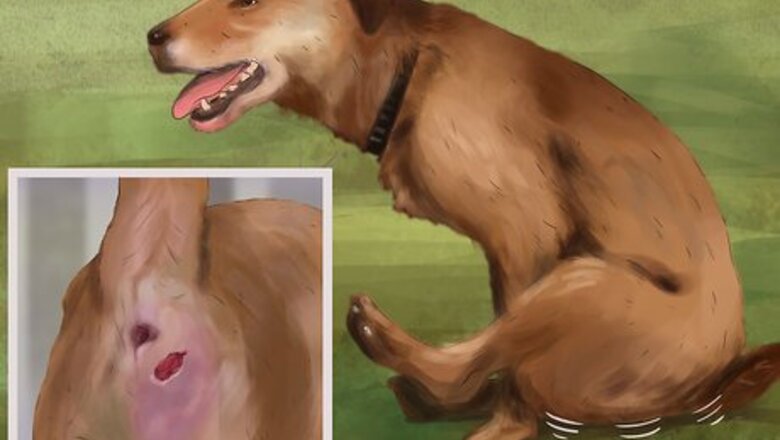
views
X
Research source
Expressing anal glands is a fairly easy process that can help keep your dog comfortable and healthy. While the veterinarian will do this for you, it's also possible to save yourself a trip to the vet's office and do it yourself. Remember, though: before attempting this for the first time, do consult a veterinarian, as improper or unnecessary expression can lead to health problems.
Preparing to Express Your Dog's Anal Glands
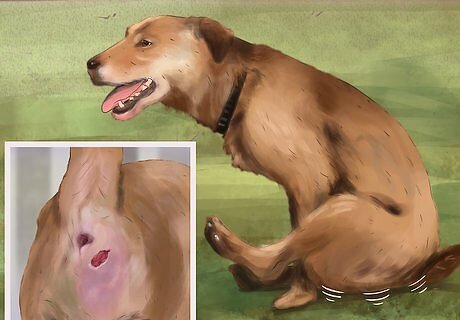
Look for certain signs of anal gland issues. When there's a problem with the anal glands, may dogs exhibit certain symptoms, which you should learn to recognize. Be sure to ask a veterinarian if you've never had this issue before: these symptoms may be a sign of other underlying issues, such as parasites, a sore bottom from diarrhea, or a food allergy, so it's a good idea to let a vet examine your dog. This way you can either rule out these issues, or get your dog the treatment it needs. The typical signs of anal gland issues include: Scooting Excessive licking of the anal area Occasional release of anal gland contents at inappropriate times (other than defecation) - you may notice a fishy odor on furnishings or coming from your dog's anus Red skin in the anal area Bleeding or pus drainage around the anus (this is a sign that you should call your vet as soon as possible - do not attempt anal expression)
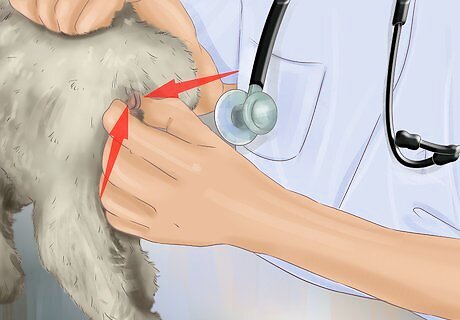
Have a veterinarian demonstrate anal gland expression the first time. If you've never expressed your dog's anal glands, ask your veterinarian for a demonstration. She can do the first gland, and then you can try expressing the second one in her presence.
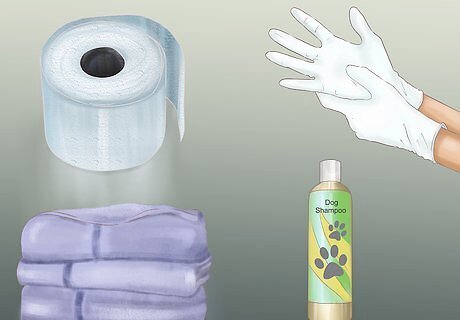
Gather your materials. Typically, three to four damp paper towels and a pair of latex gloves will be sufficient. If you want to wash the dog, also have ready whatever shampoo or other dog-friendly soaps you use, as well as plenty of towels. Latex gloves are preferable to household rubber gloves as they are thinner and more sensitive, allowing you to accurately palpate the glands.
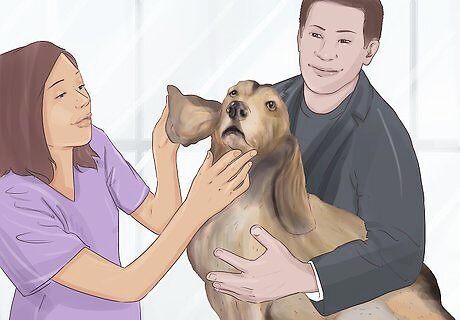
Recruit a helper if you can. While you can do this process on your own (if your dog is cooperative), it may help to have someone there to hold the dog as you work.
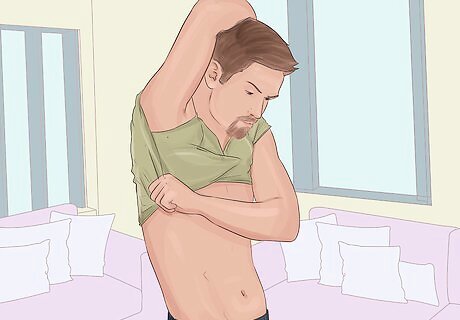
Put on old clothes. The pheromones secreted by the anal glands are very stinky. It's a good idea to wear old clothes that you can take off and wash easily.
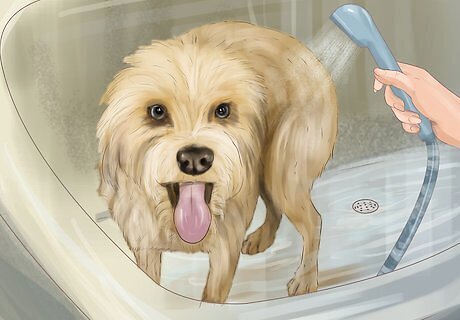
Secure the dog in a small room. Often, the bathroom works well for this purpose, especially if you bathe your dog in the tub. You just want to make sure the dog can't struggle free and run off during the process. The dog should be on an easy-to-clean surface. Since the process can be somewhat messy, pairing an expression with a bath is usually a smart idea.
Expressing the Anal Glands Externally
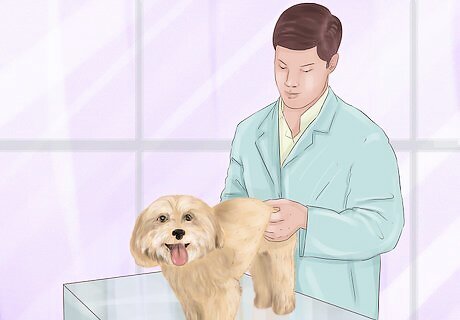
Position the dog in front of you in a standing position. Its rear end should be facing you. If you have a partner, they should secure the dog by wrapping one arm around the neck and the other at the side of the body, hugging the dog close to them.
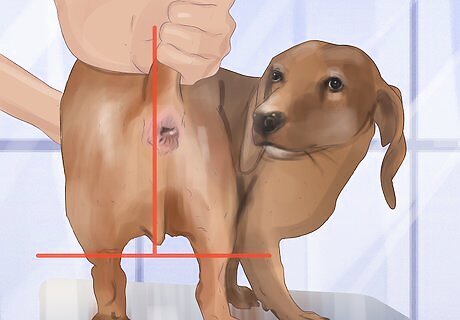
Lift the dog's tail, rolling it up to expose its anus. You should be at level with the dog's bottom, in a position that is comfortable to maintain. While the process shouldn't take too long (about five minutes), the first time may require a little extra time and patience. Make sure you're in a comfortable position. The procedure won't hurt your dog, but if the glands are particularly swollen or impacted, your pet might be guarding their backside more than usual. Be careful and pay attention to your pet's body language.
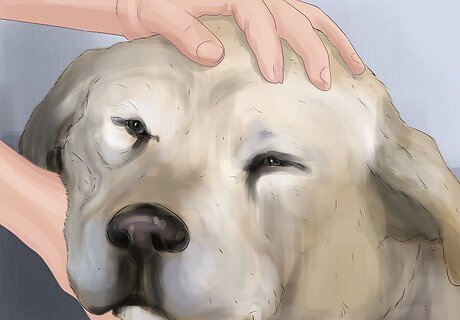
Try not to frighten your dog. Talk to it, stroke it, and attempt to keep things as relaxed as possible. You yourself should stay relaxed, as well: this will help things go smoothly.

Locate the anal glands. Place two fingers (thumb and forefinger) on either side of the anus. The anal glands are beneath the skin, just under the anus, at approximately 4 o'clock and 8 o'clock. If the glands are full, you will feel a slight bulge, about cherry-sized, when pressing inward just below the anus. Emptying the glands depends on pressing in the right place. If you can't feel the "cherries," you are either in the wrong place or the glands don't need emptying. Sometimes only one gland may be full. This could be a sign that the glands were functioning normally but that one has become infected or impacted. Call your vet before attempting to express the sac. This could require a round of antibiotics.
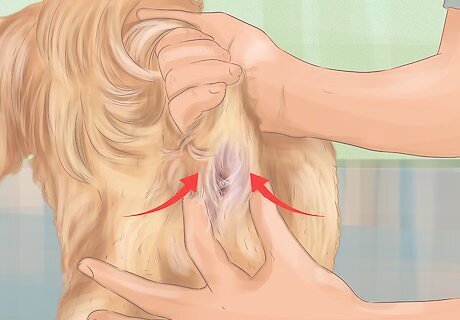
Milk the glands upwards and inwards toward the anus. Keeping your thumb and forefinger on the glands, gently apply pressure up and in, in the direction of the anus. You should not squeeze continuously, but rather in gentle pulses. Don't apply too much pressure: no more than you would apply to your own closed eye.
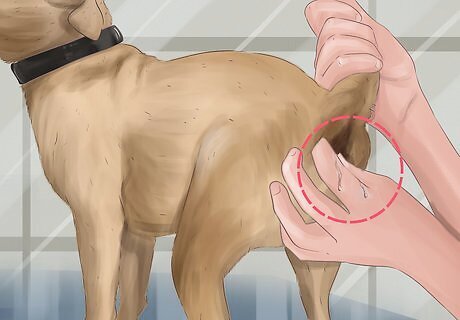
Watch the dog's bottom for expressed liquid. If you're milking correctly, the liquid should be coming out in slow drips. If nothing is coming out, try adjusting the position of your fingers. The liquid smells strongly of fish and may be anything from a clear, smooth consistency to a brownish, grainy substance. If the discharge is bloody or especially pasty, do not continue. See your vet as soon as possible about a possible impaction or infection.
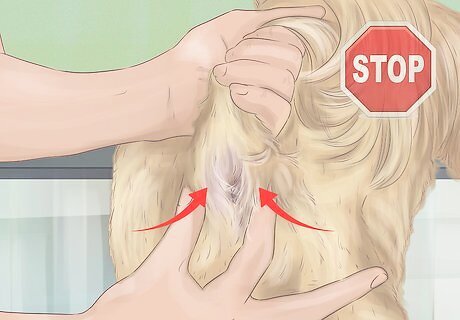
Stop after a few tries if nothing comes out. You may want to try again another day. Repeated milking can be painful and cause bruises, which only exacerbates the issue. Or, the glands may be impacted, which requires veterinary intervention. Don't force the expression. It may be difficult to express the anal sacs of large dogs because they are located deeper internally. If this is the case, don't persist and hurt the dog. Seek veterinary attention because the sacs may need emptying via an internal procedure (placing a gloved finger in the rectum, which is best done by a professional!).
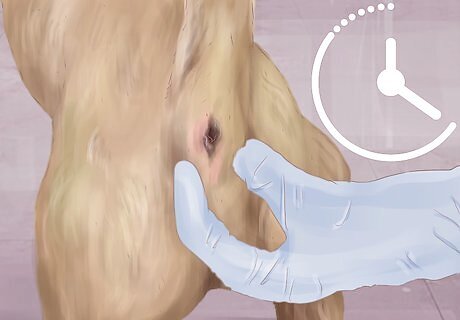
Continue to milk until the glands have emptied. You'll know they're empty when the sacs are barely palpable and there is no more liquid being expressed.
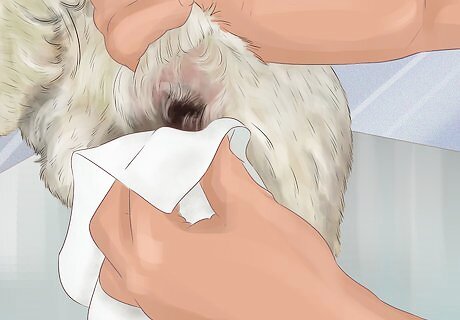
Wipe your dog's bottom with a paper towel. Do this gently, as your dog may be feeling discomfort associated with the swollen glands.

Give the dog a treat. Praise your dog, pet him, and reward him for his cooperation.
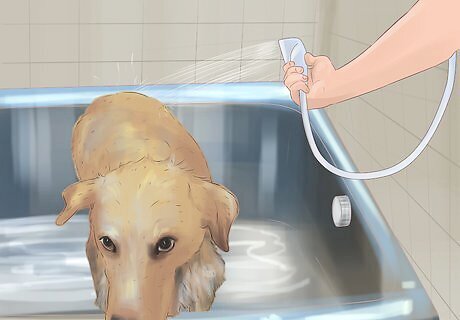
Wash the dog's rear end. Wipe the dog's rear with a clean paper towel and thoroughly bathe the dog. If your dog won't tolerate a bath at this point, make sure you at least wash and rinse his bottom before letting him loose.

Don't express the glands more often than necessary. Too much expression can do more harm than good, leading to irritation and loss of muscle tone in the gland (reducing its ability to function normally). You shouldn't need to do this more than a few times a year. If your dog has frequent troubles with his glands, see your vet. Although dog groomers may practice regular anal gland expression, this is not recommended unless there is a problem with the glands.















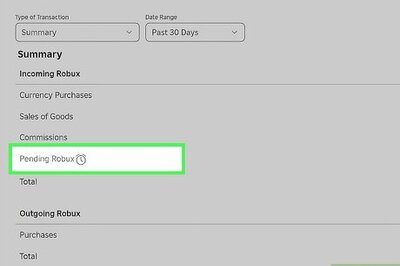
Comments
0 comment